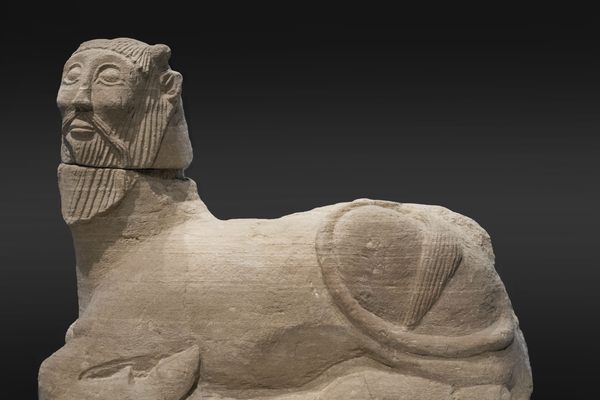About
The Virgen de El Panecillo stands on a hill in the center of Quito, visible from almost everywhere in the city. Not only is it the tallest aluminum statue in the world, it’s also the world’s tallest winged representation of the Virgin Mary.
In the 1950s, local authorities and religious leaders stood looking at El Panecillo, a loaf-shaped, 656-foot-high (200 meters) hill that rises up between central and southern Quito. They all agreed that the bare hilltop, visible throughout the city, was the perfect place to erect a statue.
After years of staring at the hill and arguing about what exactly to put on it, they finally agreed on a concept. The statue would be a far larger replica of the Virgin of Quito, also known as the Virgin of the Apocalypse, Winged Virgin of Quito, or the Dancing Virgin, a 12-inch-tall wooden sculpture created by Bernardo de Legarda in 1734. This much-loved statue was a jewel of the Quito School of Art, and venerated by the city’s faithful.
The plan was formalized in 1969, and construction of the concrete base began in 1971. The base alone took three years to complete, largely due to financial setbacks caused by the expensive volcanic stone cladding chosen to cover the concrete.
For the statue, the committee turned to the Spanish sculptor Agustín de la Herrán Matorras. He looked at the 12-inch-tall Virgin of Quito, and then he went big. From his studio in Madrid, he designed and built a 98-foot-tall replica of the winged Virgin, using 7,400 pieces of aluminum, with each piece clearly numbered. The statue was then disassembled, shipped to Ecuador, and pieced back together on top of the concrete base.
The statue was inaugurated in 1975. With a total height of 135 feet (41 meters) including the base, it was and still is the highest statue in Ecuador and one of the highest in South America—taller than Christ the Redeemer in Brazil. It also ranks as the tallest aluminum statue in the world, and the largest winged statue of the Virgin Mary. Apart from the wings, other notable elements are the globe upon which the Virgin stands and the snake that she is treading on.
As if that wasn’t impressive enough, this Virgin also appeared in a movie alongside Meg Ryan and Russell Crowe. During the beautifully shot end credits of Proof of Life (spoiler alert for the clip), viewers are taken on an aerial journey over Quito accompanied by Van Morrison’s “I'll Be Your Lover, Too.” After flying over a few famous landmarks, the camera circles around the Virgen de El Panecillo, lingering on her face as Van the Man sings “You’ll be my queen…” before the shot fades into the mist and emerges above a river valley in the Ecuadorian jungle.
Related Tags
Know Before You Go
The Virgen de El Panecillo is located on top of El Panecillo Hill between central and southern Quito. The road that runs up to the statue is called Gral Melchor Aymerich. There’s a small museum inside the base of the statue, and narrow stairs that lead up to some viewing areas. On a clear day the views are amazing. The statue is open to visitors from 9 a.m. to 5 p.m. Monday to Wednesday, and 9 a.m. to 9 p.m. Thursday to Sunday. The entrance fee is $1 US.
Wild Galapagos: An Ecological Wonderland
Darwin's legacy, snorkeling, volcanic landscapes & conservation insights.
Book NowCommunity Contributors
Added By
Published
February 6, 2019
Sources
- http://www.virgendelpanecillo.com/virgen-de-el-panecillo/
- https://claveturismo.com/es/el-panecillo-y-la-virgen-que-cuida-a-quito/
- https://www.periodistadigital.com/religion/america/2015/04/04/la-virgen-del-panecillo-la-virgen-de-quito-religion-iglesia-ecuador-vidal-semana-santa.shtml
- http://www.marisolroman.com/2018/06/05/virgen-de-el-panecillo-1976/
- https://forosdelavirgen.org/22746/virgen-del-panecillo-ecuador-28-de-marzo/











































